United Arab Emirates -

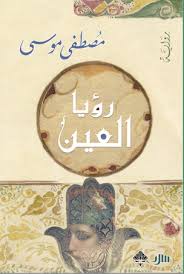
Within a Sufi framework held by Al-Attar’s granddaughter, the events of this novel take place in the critical period that Egypt is experiencing before the emergence of the Fatimid state and in its beginnings. It depicts the social situation of the Egyptian people at that time, and the political conflicts hidden under the cloak of religion. In “The Vision of the Eye,” Mustafa Moussa weaves two parallel stories that go side by side, and are intertwined with a third heritage story narrated by “Ablaa” over many years. Fates intersect, destinies are drawn, and the facts of a conflict that will last forever are revealed.
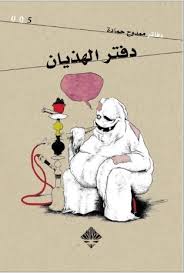
The subconscious is a world full of life, which has no rules or pre-determined form. It is a life like a crashing wave, in which stories occur that only their owners know, and which rarely reach paper. Wading in this sea is a very complicated matter, but it is a very enjoyable matter, and the more you know, the darker it becomes, because ideas throw their impurities into it, forming in this way their opposites that disturb us whenever we sail in them.
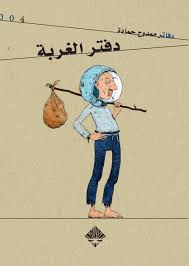
The life of an expatriate is a journey of pain and happiness, loss and discovery, success and disappointment. It is a painting in which contrasting colors, very dark and very bright, clash. The life of an expatriate is a journey whose end, according to plan, is a return to the mother’s embrace, the mother who carried him and watched over him as a child, and the homeland mother that contains all his previous memories, but it often ends with the end of the expatriate before the end of the journey or with the end of the mother. This book presents stories of the life of an expatriate that are almost identical to reality, and carry within them all those emotions that we mentioned at the beginning, and it has a tendency toward presenting the condition of the expatriate without adding the usual touch of romanticism, as it is, and without exaggeration or frills.
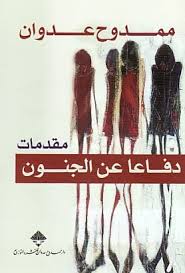
Man had a beautiful dream about himself, and he aspired to transcend his human condition, but a succession of circumstances opened a wound in this dream. The dream began to bleed and fade away. As it atrophied, it began to take on forms and names. From time to time, a person became aware of his tragic loss and realized that he was working hard to prevent himself from descending from his human level to the level of an animal, and when he resisted, his resistance took on a form of madness, and in this book an attempt is made to touch upon something of... This bleeding is particularly within the context of creative expression. Perhaps these (introductions) could be an (introduction) to a more comprehensive research, or research, but we are currently in the stage of defending our right to insanity.
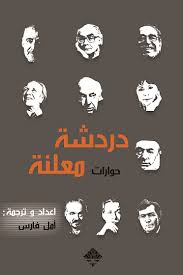
This book contains a translation of a number of television interviews with some of the most famous Latin American writers and poets, some of whom left our world leaving a great literary legacy, and some of whom are still with us today, enriching our lives with their cultural production. The topics of these interviews varied between shedding light on the details of these writers’ personal lives and their biography and intellectual biography, to their critical opinions regarding their literary experiences and the experiences of some other writers. Some of these interviews were conducted by media professionals and journalists on television programs, or were meetings that brought together writers with each other, such as Márquez’s interview with Neruda. We hope that this book will be a window to discover new aspects about writers who enriched our culture and made our world wider.
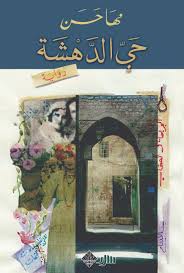
“Amazing is a hidden treasure in Aleppo,” says one of the novel’s heroines. In her work, Maha Hassan tries to bring this amazement through writing and memories to re-draw Aleppo and its ancient popular neighborhoods, its rituals of living, the simplicity of its people, and their small dreams, before the war comes and destroys all of this in its path. Relying on a unique technique inspired by the names of Arab and international novels and the titles of the chapters, the heroes of “The Amazing Neighborhood” tell us their story from “Zarqa’s Imagination” and “Beirut Nightmares” to the house of “Sleeping Beauties.” It is a story about love, childhood memories, intentional killing, the emotional placenta, and the role of literature in our lives

Thousands of afflicted families from both sides, each calling their deceased a martyr. After the fragmentation of her brothers, Inanna understood that life as she was accustomed to it had ended in a sea of pain that had become the identity of this people. Surrounded by all this death, Inanna meets Sargon, who tells her about death and tells a mysterious story from a previous era about his grandfather, and she is filled with questions. Relying on popular stories of reincarnation, Rabih Murshid tells the story of Syrian fragmentation...
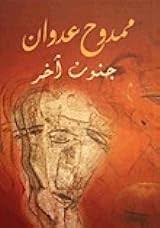
After trying my previous book, “In Defense of Insanity,” it occurred to me to do it again. The issue, in brief, is that I select from things that I have previously published in periodicals or introductions to books, what I consider to be valid beyond their time. This book is not a continuation of the previous book, but rather a continuation of it. It contains Lee's opinions on art, culture, journalism, women (and some politics). The question that confronted me in my first book confronts me now: What do these articles have in common? The answer is as naive as I answered earlier: What unites these articles is that I wrote them. The opinions here are my own, which may mean nothing to some of them, and may not mean anything to others. But it was important to me, myself, to say these opinions, and to record them, and among them was a farewell to figures like Assi Rahbani and Al-Dhahirah Rahbani, and even a farewell to a number of friends who had passed away, and who had passed through my life only briefly. Perhaps some bitterness still exists here as well. Upon reviewing the articles, I discovered that I was insisting once again on the losses that had befallen our lives. These are losses greater than military or political defeats. It is our constant humanitarian bleeding. And the one who gives us life...or makes us mad.
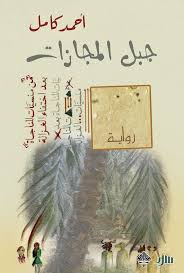
Endless hordes of palm trees roll horizontally, regularly and lightly, behind a small human body, heading towards the village of “Al-Ghazala” to destroy it completely. While the residents of the village and its people live the horror of the last moments, awaiting their inevitable fate drawn by someone seeking revenge, there are pasts that unfold, events that appear, and stories that are reproduced to tell the story of two imaginary villages. In a strange atmosphere, and the strangest relationships between the characters of his novel, “Ahmed Kamel” grapples with the idea of human helplessness, and delves into the worlds of secret desires, which people do not dare to announce or reveal. “Mountain of Metaphors” is a novel that takes inspiration from the proverbs of villages in the Egyptian countryside, the beliefs of its people, and their fairy tales, to build its own myth.

The book As for After... is a book of testimonies from independent artists and cultural actors that includes private testimonies written by more than 80 Syrian and non-Syrian independent artists and actors. This book aims to monitor the most important experiences of independent Syrian cultural work between 2011 and 2016 through the eyes and pens of its practitioners and recipients inside and outside Syria. The certificates in this book are distributed across all creative and intellectual fields, including creative writing, performing arts, music, photography, research and design, as actress Hanan Haj Ali presented the book. The book As for After is a special initiative by Ettijahat that aims to sculpt and present a free and honest image of Syrian cultural work, produced and received through multiple media.
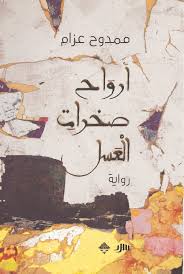
A unique friendship brought together Abed, Hamed, and Khaled, but the war tampered with this friendship and shattered it. The narrator recalls the life history of these three, using those close to them, to fill in the gaps in the story, and to discover the secret of the mysterious prophecy made by Abed, in which he said that he would die near the honey rocks after six years and two months. In poetic language, Mamdouh Azzam writes about death, friendship, and love, and about the bitterness of grudges that grow and grow in the mud of vile wars. And about war and the impact it leaves behind on people's souls.
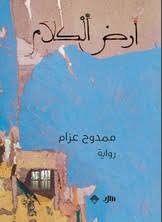
During the unity between Syria and Egypt, the people of a small village in southern Syria submit a request to the region’s directorate about their desire to establish a public library. This request raises the astonishment of the authorities, as how can a village where most of its people have left due to drought, famine, and the approaching famine want paper instead of paper? the bread?! With a circular narrative that begins with the submission of a purchase order and ends with the bookstore’s mysterious disappearance, the stories reproduce one after another, creating the novel’s grand narrative: the story of the desire for knowledge and imagination.
By Heba Mahrez - Wael Salem - Wassim Salti - Wassim Al Sharqi
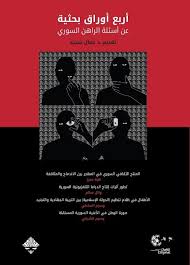
It includes four research studies that were completed in the third and fourth cycles of the Research Programme: To Deepen the Culture of Knowledge: - Studying the Syrian cultural product in exile between democratic integration and acculturation. Germany is a model between the two stages of voluntary and forced migration, by researcher Heba Mehrez, under the supervision of Dr. Jamal Shehid. - The development of Syrian television drama production mechanisms by researcher Wael Salem under the supervision of Dr. Mary Elias - Children in the darkness of ISIS: between jihadist education and recruitment, by researcher Wassim Raif Salti and supervised by Dr. Jamal Shahid. - The image of the homeland in the independent Syrian song (From All of Us Together to Bread of a State), by researcher Wassim Al-Sharafi and supervised by Dr. Mary Elias.
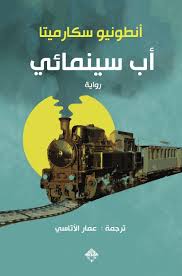
When Jack got off the train carrying his certificate from the Teacher Training Institute, his father boarded the same train and disappeared. Haunted by his father's abandonment of him, he spends his day teaching in his small village in the morning, and befriending the village miller in the evening, trying to find out from him the secret of his father's disappearance. The miller encourages him to participate in an adventure that takes him out of his small world and into the brothel of the neighboring city, and his favorite student tries to share this secret journey with him. With a young man searching for his father, a teenager searching for the journey of adulthood, and the complex young relationships of the residents of a small village, Scarmita takes us on a sweet journey of loss, maturity and forgiveness.
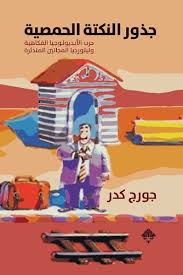
It is true that the joke has its own literature and rules in funny literature, but it is also true that it has deep roots in the lives of peoples that determine its general framework. By virtue of its targeting of a people, a sect of it, or an unknown or known person within it, it takes its general and current form, crystallized from “humorous” types. “It suits the era in which it was found, and it can be said: The general context of what is funny and what makes us sad does not change, but what changes is the mechanism of receiving them. Al-Homsi, as one of the prominent figures in contemporary humorous literature, was targeted from the beginning and labeled a fool. Indeed, Ibn al-Jawzi classified him among “the absolute fools and fools.” Accordingly, the jokes were focused on the people of Homs later. For your information, what marked the people of Homs was created by important historical events that the city experienced. Homs has fought a humorous ideological war throughout its history. This work examines the roots of the Homs joke without entering into an analysis of the jokes told about the people of Homs, except what is necessary to point out.

Enter your address and we will specify the offer for your area.